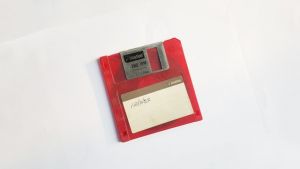Digital Workshop Facilitation
| Type | Team Size | ||||||
|---|---|---|---|---|---|---|---|
| Me, Myself and I | Group Collaboration | The Academic System | Software | 1 | 2-10 | 11-30 | 30+ |
Contents
What, Why & When
This article will provide you with ideas helpful to preparing and carrying out digital workshops or online sessions in general. It is especially meant to prevent "online fatigue" and share best practices that make online communication less error-prone and exhausting.
Goals
Provide an overview of methods, tools and approaches useful to organizing online workshops with multiple participants.
The Tips
Communication 💬
Get the basics right
Just as in the analogue world, you should stick to the basics that make meetings effective and organized. We think it is even more important in the digital realm:
- Have a clear agenda and goals for the meeting
- Time yourself. You can use tools to support that, e.g. Pomodoro Tracker
- Clarify roles (Who is moderating? Who is writing protocol?)
Have clear communication and moderation rules
As there are so many channels online, you will need to establish some ground rules regarding what to communicate where and when. You can think about these prompts:
- How are questions being asked? In the chat? Verbally? Raising a virtual hand first?
- What's going to be the chat's function?
- How is agreement being signalled (e.g. via chat, a separate tool, non-verbal-communication-features)?
- How can participants signal that they need a break?
- Who is writing the protocol?
- For longer workshops, you can start by collaboratively writing a Code of Conduct to which everyone agrees in an Etherpad.
Create a feeling of personality and proximity
We only ever see our heads and hear our voices, and it is hard to chitchat online - it can be difficult to get to know each other. Here's some suggestions to alleviate the issue:
📹 Turn on cameras! If webcams are missing, suggest uploading a profile picture.
🕊 Have everyone prepare a "tweet" (140 / 280 characters) about themselves which can be read out during an initial introduction round.
🍎 Let people introduce themselves with one or multiple questions such as
- "If you were a fruit/vegetable/animal/..., which would you be and why?" or
- "What's the first thing you're going to do when the CoViD-19 lockdown is officially over?"
👉 Do a Check-In / Check-Out
Ensure participation possibilities
Working with digital tools can be great, but it can also be exclusive if people lack the experience or technical requirements to participate. If you are using tools, ensure that everyone has access and knows how to use it.
Get Live-Feedback
As a moderator, it can be hard to estimate how your group is feeling, especially when you're not in the same room. Try to keep in mind asking for your groups energy level.
Here's a few suggestiongs on how you can do that
- Have people raise their hands on the left side of the screen, indicating how high their energy level currenty is
- Do a poll on it (see section "Polls & Quizzes" below)
- Ask people to give a thumbs-up or -down
Interactivity & Variety ✨
There are several opportunities to create interactivity online. Here are our suggestions:
Use Digital Energizers
Energizers are very common in the analogue world, and they are sometimes hard to reproduce in the digital. Here are our suggestions on what you can do: Digital Energizers
Facilitate interaction between participants
Speaking in nerd terms, online meetings are often "one-to-many" communication, where one person is broadcasting to everyone else. Encourage people to talk to one another! You can use break-outs (see section below) or have participants pick other participants to talk next.
Incorporate polls & quizzes
Polls are a great way to get feedback from your audience. There are several ways and different tools to do this. We can recommend e.g. Mentimeter.
Use Break-Out-Sessions
Break-Out-Sessions are a great way to dissolve your group into smaller discussion groups, work out a specific question or problem and then come together to discuss in the larger group. Unfortunately, this is, as far as we know, restricted to the software zoom at the moment.
Here's some things we find important for using them:
📣 Communicate clearly a) how much time is to be assigned for the break-out-sessions and b) what the result of the break-out should be and how it should be presented.
⏲ Give participants time to organize themselves. They might see each other for the first time.
😈 Suggest roles for the sessions and encourage participants to distribute those among themselves. (Yes, that's meant to be a Devil's Advocate)
Use different types of media
Listening to one single person for an elongated timespan can become strenuous no matter his or her rhetorical sophistication. We suggest you use different types of media to spark interest and keep thoughts flowing, including but not limited to videos or music.
Use real-time collaboration tools
With the absence of physical white-/brownboards and paper, real-time collaboration can be tricky. There are however a few tools that can get the job done. Here are some of our suggestions in ascending sophistication:
- The chat of your video conferencing tool is a good place to start.
- Collaborative writing tools such as Etherpad or Google Docs
- Simple online whiteboards. Some video conferencing tools have them integrated (e.g. zoom), but there are also stand-alone alternatives with a low entry threshhold such as AWW App
- Full-blown real-time collaboration tools. They usually need some getting used to and have a learning curve, but the potential is equally bigger. We tried Miro and approve (they also offer free education accounts here).
Retaining Results 🧠
Retaining results is one of the most important yet overlooked parts of workshops that can get lost in the heat of the moment. Here's some suggestions on how to not go down that road:
- Make sure you have a slot in the agenda for reflection and wrap-up
- Have a common file share or workspace to which all participants have access
- Do the equivalent of a photo protocoll in a PowerPoint (or something similar)
- Leave some room for open questions. Remember that it is important to give this at least a few minutes of time as questions have to start building up. You can play music in the background if you can't stand the silence.
- Do a poll at the end: What did people learn? What did you get out of the event?
- Don't forget to brush up the results and provide them to your participants!


